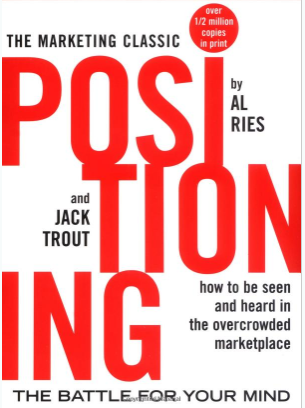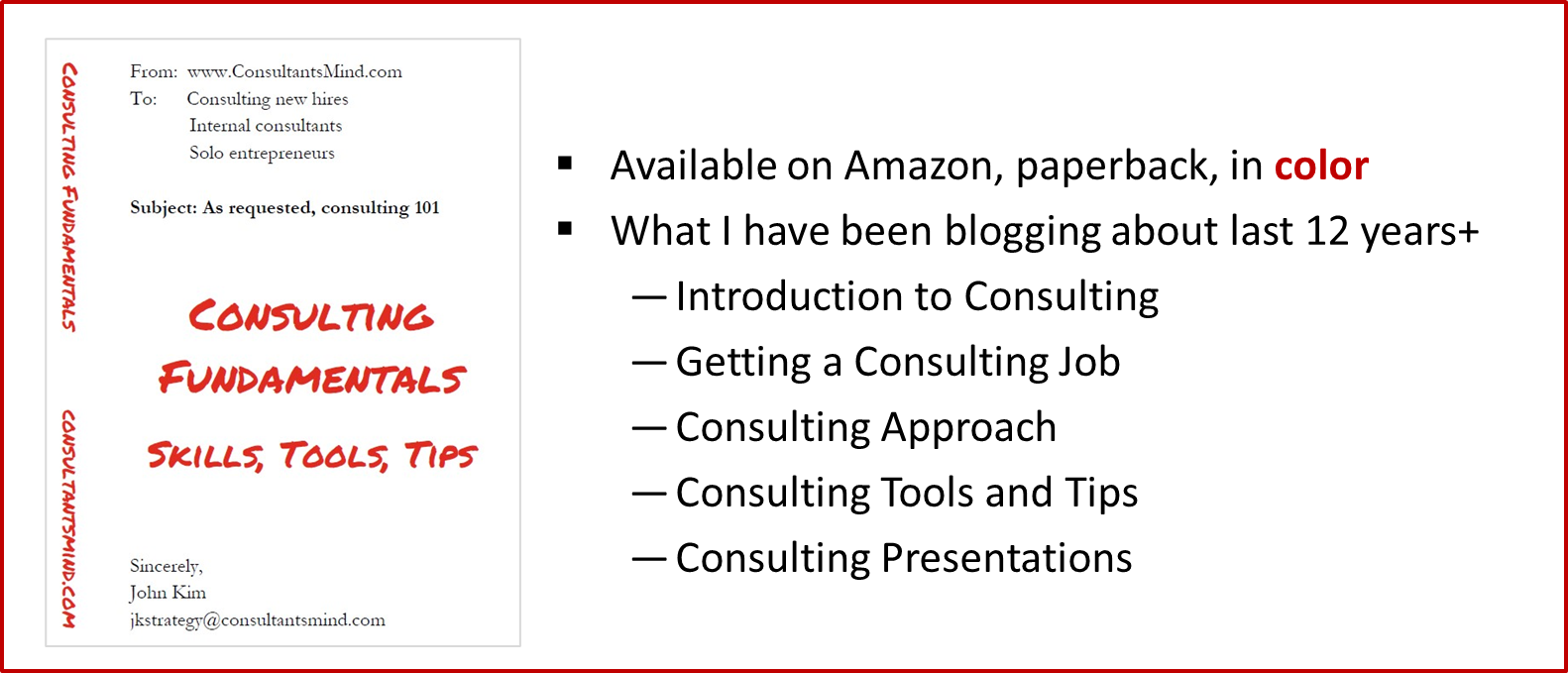
Start with positioning
Marketing strategy is an enormously vast, fun, and exciting topic. In that forest of thinking, I would argue that positioning is the first-domino idea to consider. It’s a 40 year-old idea that is just as important as it was in 1972, when Al Reis and Jack Trout wrote a fateful article in Advertising Age here.
When student asks me for great marketing books to read, I often mention the marketing classic called Positioning: Battle for Your Mind (affiliate link), but after re-reading it today, I changed my mind:
- Yes, you definitely need to know the concepts.
- Don’t read the book, the examples from 40 years ago are anachronistic and hard to follow.
This blog post will save you $10. Read on . . .

We live in an over-communicated world
The authors explain that the modern consumer (yes, circa 1978) is overwhelmed with information; she just doesn’t have the brains pace to process everything. They call it an assault on the mind – sounds right to me. Too many choices = small consideration set. If heuristics (rules of thumb) were important in 1978 before CNN, sheesh, it’s more important now. Now, most people cannot pay attention to the conversation they are having with their spouse at dinner. You’ve seen the meme of two people at a restaurant, in silence, looking at their phones.
Over-communicated world leads to a simplified mind. A simplified mind needs a simplified message.
Simplify your message
To cut through the clutter, your message should be (simple and) clear.
In communication, as in architecture, less is more. – Al Ries & Jack Trout
Boom. Cannot over-emphasize this.
If you can’t explain it simply, you don’t understand it well enough. – Albert Einstein
Look for the solution (not in the product), but in the prospect’s mind
As a marketer, stop trying to push more things into your prospect’s crowded head. It’s enormously expensive, tiring, and in many ways, futile. Instead, look for the solution inside the prospect’s head. Wha? I know that sounds like super “Use the force, Luke” Jedi mind-tricks, but go with this idea:
The basic approach of positioning is not to create something new and different, but to manipulate what’s already up there in the mind, to retie the connections that already exist . .You concentrate on the perceptions of the prospect, not the reality of the product. – Al Reis & Jack Trout
Don’t like the word “manipulate”, but you get the point. It’s all about perception. Remember, the subtitle of their book is “the battle for your mind”. Marketing is about them (prospect), not you (marketer). Two thoughts:
- Tie-in with strategy: Self-reinforcing, goal-oriented activities which create a sustainable competitive advantage; namely, creates an economic moat by being different. Strategy is what you don’t do.
- Tie-in with Clayton Christensen: Professor from HBS, author of Innovator’s Dilemma (affiliate link) says that we hire products to perform a job for us. Story about milkshakes here.
What job is your product / service uniquely capable of solving ? Now. . . how do you communicate that?
The aim of marketing is to know and understand the customer so well that the product or service fits him and sells itself. – Peter Drucker
Be first
The easiest way into the mind is to be first. In advertising, it’s the best to have the best product in your particular field. It’s even better to be first. – Al Reis & Jack Trout
They argue that our simple minds create a ladder of choices. Being first is best. This allows you to better own the category (think: Xerox, Kleenex). For me, this seems a bit Pollyanna (too good to be true) right? How can you always be first? Aren’t there lots of disadvantages to being first (e.g., not knowing customers’ tastes, over-investing in fundamental R&D etc)? Does this only apply in a world of endless micro-segmentation?
Lots of advice of how to position yourself successfully as the #2 player (think: Avis), or to position against the dominant brand (think: 7-Up, Burger King). NB: Know where you are in the ranking, in the customer’s mind.
Create a new category
Ries & Trout are largely against line-extensions, where you create new derivations of the same thing (lemon scented detergent in pods etc). They believe in launching new categories (that way you can be first).
- Tie in with blue ocean strategy: For the novice marketer, this sounds like creating new demand and trying to make the competition irrelevant. Breaking out of the fixed “red ocean” of win-lose competition.
Own a word
Taken to the next extreme, your solution is so simple and conclusive that you OWN a word or phrase. I remember hearing Al Reis speak at business school 20 years ago. He asked the audience which word Volvo owned, and the audience fairly uniformly answered, “safety”. Then he asked which work General Motors owned. Silence (or mumbling, don’t remember).
Yes, the creator economy
Update: IMHO (In my humble opinion), I believe this is why the creator economy / influencer economy is so powerful. You can be a category of 1. This is why Substack (blogging platform) and Patreon (blogging platform) are so disruptive and powerful. You can code (GitHub), you can learn (Linkedin Learning), you can create (Etsy), you can compose music (Spotify). You can position yourself uniquely.
Will stop here because I don’t teach marketing, and don’t want to get too “ahead of my skis” on this. That said, please consider 22 Immutable Laws of Marketing (affiliate link). Same authors as Positioning, just as good.

